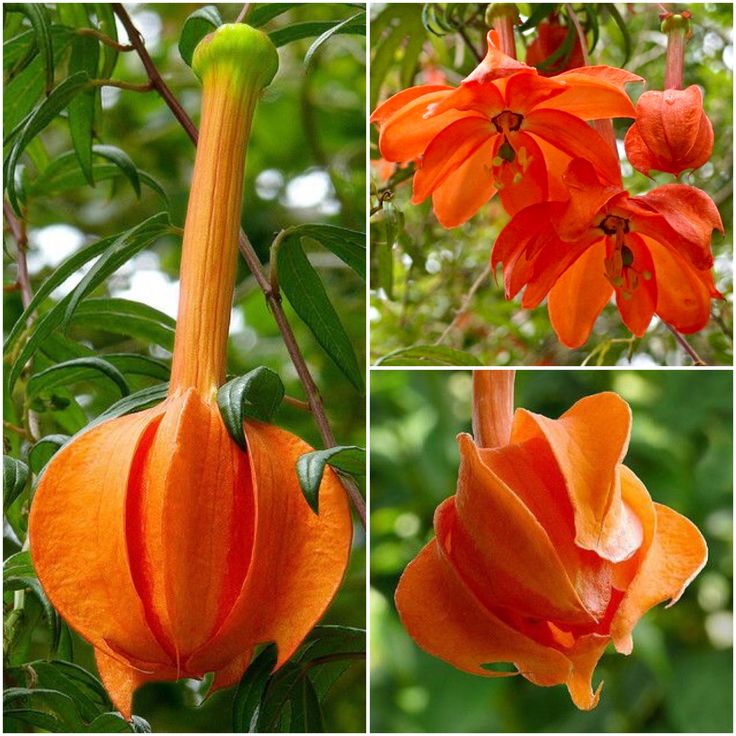Passiflora parritae is a rare and exquisite species of passionflower native to Colombia. Known for its strikingly beautiful, large, and elongated coral-colored flowers, this species has captivated botanists and horticulturists alike. However, due to habitat loss and its specific growing requirements, P. parritae is considered highly endangered. This article provides an in-depth look at the taxonomy, morphology, habitat, cultivation challenges, and conservation efforts surrounding this extraordinary plant.

Passiflora parritae belongs to the Passifloraceae family, which comprises over 500 species, many of which are known for their ornamental value and edible fruit. It is closely related to Passiflora antioquiensis, another stunning Colombian species. Both are classified under the supersection Tacsonia, a group of high-altitude passionflowers characterized by their long, tubular flowers adapted for hummingbird pollination.
Kingdom: Plantae
Order: Malpighiales
Family: Passifloraceae
Genus: Passiflora
Species: Passiflora parritae
Passiflora parritae is a climbing vine with remarkable floral and foliage features.
Large, pendulous, trumpet-shaped flowers
Coral to salmon-pink coloration with a deep red interior
Long floral tubes, typically exceeding 10 cm, facilitating pollination by hummingbirds
Prominent reproductive structures, including five stamens and three-lobed stigmas
Deep green, leathery, and lobed
Typically three-lobed, providing a distinct appearance compared to other passionflowers
Produces elongated, greenish-yellow fruits
Edible but not commonly cultivated for consumption
Passiflora parritae is endemic to Colombia, primarily thriving in the Andean cloud forests at elevations of 2,000 to 3,500 meters above sea level. These forests provide the plant with:
Cool temperatures (10–20°C or 50–68°F)
High humidity and consistent moisture levels
Dappled sunlight, as it grows under the canopy of taller trees
Due to its very specific ecological requirements, it does not adapt well to lower altitudes or warmer climates, making its cultivation outside of its native range exceptionally challenging.
Like many passionflowers in the Tacsonia supersection, P. parritae relies on hummingbirds for pollination. The elongated floral tube is specifically adapted to the long beaks of these birds, ensuring effective pollen transfer. However, due to habitat fragmentation and a decline in pollinator populations, natural pollination success has become increasingly rare.
Despite its ornamental appeal, Passiflora parritae is notoriously difficult to cultivate outside its native environment. Several factors contribute to this difficulty:
Requires cool temperatures and high humidity
Struggles in warm or dry climates, often perishing if exposed to prolonged heat
Prefers well-draining, slightly acidic soils
Requires consistent moisture, but excess water can lead to root rot
Seeds have low germination rates and require stratification
Cuttings are difficult to root, and grafting onto hardier Passiflora species is sometimes attempted
Prone to fungal infections and root rot in non-optimal conditions
Sensitive to pests such as spider mites and aphids in greenhouse settings
Due to deforestation, climate change, and habitat destruction, Passiflora parritae is classified as critically endangered. Its small natural range and highly specific ecological requirements make conservation efforts both urgent and challenging.
Habitat Loss – Logging, agriculture, and land conversion have significantly reduced its native range.
Pollinator Decline – Hummingbirds essential for pollination are becoming less common due to habitat disruption.
Overcollection – As a rare and sought-after species, it has been over-harvested by plant collectors.
Botanical gardens and conservationists have been working to preserve Passiflora parritae through:
Ex-situ Conservation: Propagating and maintaining plants in botanical gardens
Seed Banking: Storing seeds for future reintroduction efforts
Habitat Protection: Advocating for conservation areas in Colombia
Grafting Experiments: Attempting to graft P. parritae onto more resilient Passiflora species to improve survival rates
One of the most significant achievements in P. parritae conservation was successfully cultivating it in controlled environments, such as the University of California Botanical Garden, where it was hybridized with Passiflora antioquiensis, leading to a more resilient hybrid.
Passiflora parritae stands as one of the most breathtaking yet elusive passionflowers in the world. Its stunning coral-pink blooms, delicate ecological balance, and cultivation challenges make it a rare botanical treasure. However, without continued conservation efforts, this species faces the risk of extinction. Protecting its natural habitat, improving propagation techniques, and raising awareness of its plight are essential steps to ensure that this extraordinary plant continues to thrive for generations to come.
1. Can Passiflora parritae be grown in home gardens?
It is extremely difficult to cultivate due to its need for cool temperatures and high humidity. Greenhouse cultivation is required in most regions.
2. Why is Passiflora parritae so rare?
It has a limited native range, strict environmental requirements, and low seed germination rates, making natural and artificial propagation challenging.
3. What pollinates P. parritae?
Primarily hummingbirds, which are adapted to its long, tubular flowers.
4. Are there any hybrids involving P. parritae?
Yes, it has been hybridized with Passiflora antioquiensis to create more adaptable varieties for cultivation.
5. How can I help conserve Passiflora parritae?
Support conservation organizations, botanical gardens, and sustainable cultivation efforts to protect this species from extinction.
By understanding and appreciating Passiflora parritae, we can contribute to the ongoing efforts to preserve one of the world’s most extraordinary passionflowers.
animal tags: Passifloraceae
We created this article in conjunction with AI technology, then made sure it was fact-checked and edited by a Animals Top editor.